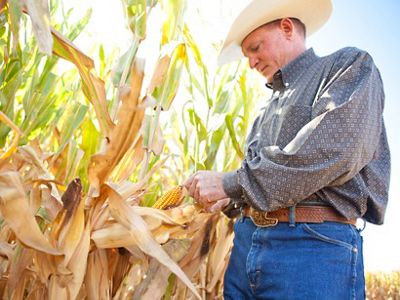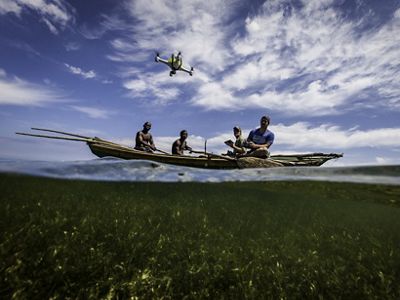"Does cooperation actually lead to a better environment?"
That’s a central question in the work of Örjan Bodin, a researcher at the Stockholm Resilience Centre. As 2017 draws to a close—a year in which, in many countries, partisan lines hardened and nationalist politicians advocated for a turn inward, away from the global stage—we might ask, “can cooperation lead to a better world?”
As a global conservation organization dedicated to improving the future for people and nature, our answer at The Nature Conservancy is a resounding “yes.” The environmental and development problems we confront today don’t fit neatly within national borders—they don’t even fit within discrete sectors. We see this as an opportunity—a chance to forge new partnerships with other institutions, businesses, governments and communities around the world.
Bodin’s research suggests that collaboration alone won’t solve our problems—success hinges on connecting the right actors in the right kind of networks, with organizing help from "trusted coordinators." Building such networks isn't easy—but the results can make a powerful difference for people and nature.
Looking back at 2017, amidst persistent challenges there is also cause for hope in how collaborative efforts are creating new opportunities for a better future. In no particular order, here are some of our favorite stories.

1. Conserving the Landscapes that Supply Our Water
- Who: Government agencies; utilities; food and beverage companies; farmers, landowners and local communities
- What: A vehicle to bring water users together to collectively invest in upstream land management and water source protection
- Why: Healthy source watersheds are vital to the water security of nearly all cities around the world

2. Planting Trees for Healthier Cities
- Who: Medical researchers, city agencies and environmental NGOs
- What: A 5-year experiment to evaluate the health benefits of urban trees
- Why: An emerging body of research shows that urban trees are a cost-effective solution to reduce air pollution and support better health for city residents

3. Smarter Farming for a Healthier Planet
- Who: Farmers and landowners; food and commodity companies; soil scientists; policy makers
- What: Collaborations that advance knowledge of soil science and promote soil health and nutrient management on farms
- Why: Improved soil management can increase farmers' yields while also reducing carbon emissions and nutrient runoff

4. Innovating Our Way to a Sustainable Future
- Who: Technology companies, venture capitalists, environmental NGOs
- What: A business accelerator for technology startups focused on sustainability
- Why: Technological innovation will be crucial for taking sustainability solutions to scale

5. Nature’s Role in Responding to Climate Change
- Who: Farmers and land managers; food and commodity companies, timber and wood companies; NGOs; national and sub-national governments; indigenous communities
- What: New research showing how nature can play a bigger role in fighting climate change
- Why: Changes in land stewardship can get us more than 1/3 of the way to global climate goals

6. Making Smart Investments in Coral Reefs
- Who: Tourism and travel companies; economic and environmental researchers
- What: Innovative research combining academic studies with social media data to quantify the tourism value of coral reef—and thus help the industry make more informed investment decisions to support reef management and conservation
- Why: In addition to generating tens of billions of dollars for the global tourism industry, coral reefs promote healthy fisheries and protect coastal communities

7. Communities Lead on the Path to Climate Progress
- Who: National, regional and local communities around the world
- What: On-the-ground projects to help communities adapt to and mitigate climate change
- Why: Climate change is one of the greatest threats we face as a planet—but we can make progress through the cumulative efforts of initiatives around the world.
Global Insights
Check out our latest thinking and real-world solutions to some of the most complex challenges facing people and the planet today.
